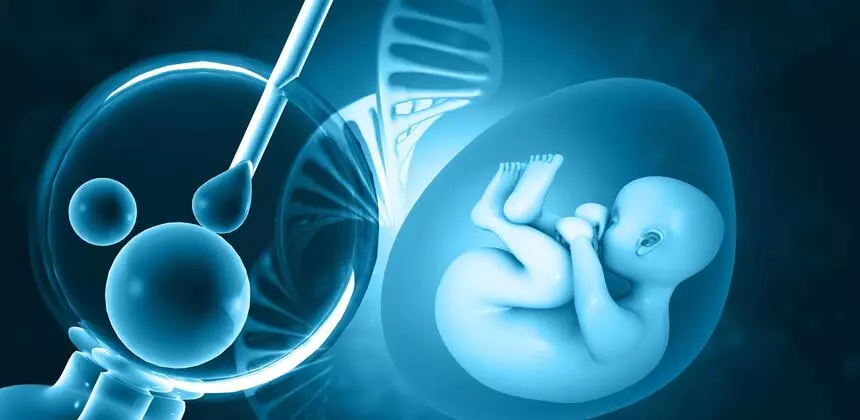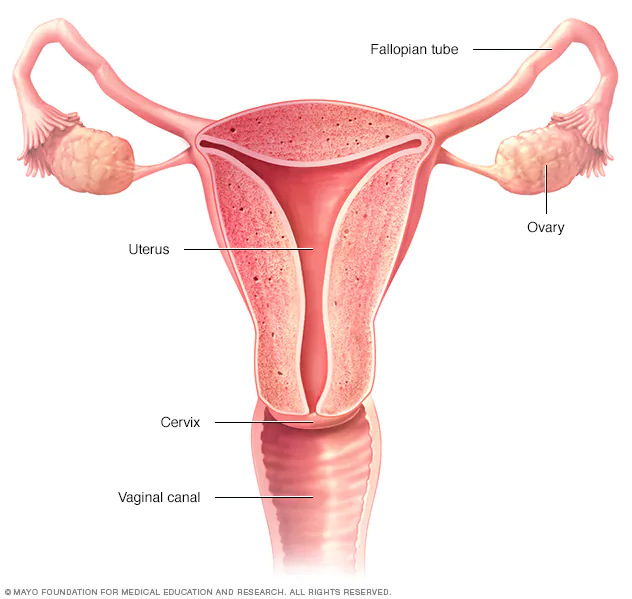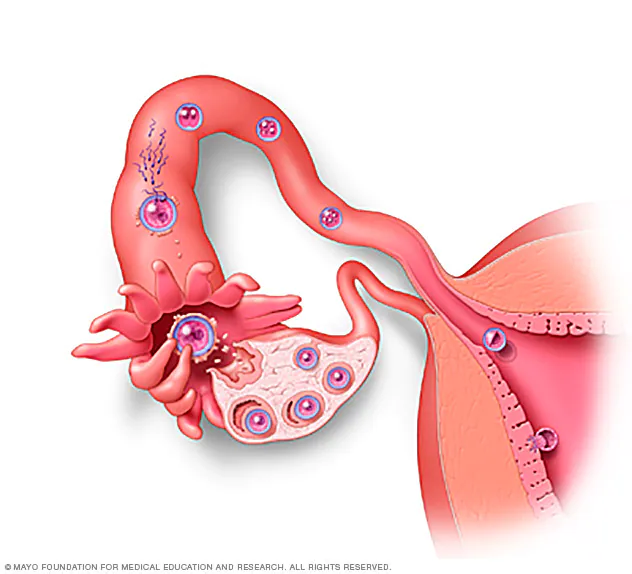

In vitro fertilization with high success rate at best Fertility centers in Iran.
By Ariana Tour Medicare services can fulfill your hopes and dreams of having a child this year.
Are you looking for the best option to do IVF? You probably know that IVF is a very expensive fertility treatment. In Iran more than 70 fertility clinics are prepared to help you conceive a child through effective IVF treatments. You can get this treatment in Iran at low prices with a best treatment. Don't worry about travel hassles. We make all the arrangements for you. Call us for a free consultation. To learn more about IVF, read the article provided below.
In vitro fertilization (IVF) is a type of assisted reproductive technology (ART) where sperm and an egg are fertilized outside of the human body. IVF is a complex process that involves retrieving eggs from ovaries and manually combining them with sperm in a lab for fertilization. Several days after fertilization, the fertilized egg (now called an embryo) is placed inside a uterus. Pregnancy occurs when this embryo implants itself into the uterine wall.
According to the UK Human Fertilization and Embryology Authority, a single IVF treatment cycle can take anywhere from 3 to 6 weeks. However, a person may need more than one course depending on the risk factors and treatment success rate.
Techniques may vary by clinic. However, IVF usually includes the following steps:
1. Superovulation
Ovulation is also known as controlled ovarian hyperstimulation. Fertility drugs contain either luteinizing hormone or follicle-stimulating hormone. These hormones cause the ovaries to produce more eggs than usual. Transvaginal ultrasound scans can monitor the growth and progression of the ovaries.
2. Retrieving the eggs
Doctors use a minimally invasive procedure known as "follicular aspiration" or "oocyte retrieval" to collect the eggs.
With ultrasound guidance, a thin needle is inserted through the vagina into the ovary. The needle is connected to a suction device that removes follicle fluid and eggs. Doctors do this process for each ovary.
3. Insemination, fertilization, and embryo culture
The collected eggs are placed with the sperm and preserved in an environmentally controlled chamber. After a few hours, the sperm should enter the egg.
Sometimes the sperm is injected directly into the egg. This process is known as intracytoplasmic sperm injection (ICSI). Frozen sperm, obtained through a testicular biopsy, may be used.
The fertilized egg divides and becomes an embryo. Once embryos reach the blastocyst stage, many fertility centers offer preimplantation genetic testing (PGT). This technique checks the fetus from a trusted source for chromosomal abnormalities or aneuploidy.
The transfer uses one or two of the best embryos. The person then receives hormones and other medications to prepare the lining of the uterus for implantation of the embryo.
4. Embryo transfer
Sometimes, the uterus receives more than one fetus. It is important to discuss the number of embryos transferred with your doctor.
It is most common for a doctor to transfer only one embryo. The decision to transfer more than one embryo must take into account several risk factors, and a person should discuss them with a doctor.
About 3-5 days after fertilization, embryo transfer using a thin tube or catheter begins. It enters the uterus through the vagina. When the fetus attaches to the uterine lining, also known as implantation, pregnancy begins and fetal development continues.
How much does IVF cost in Iran?
Cost of IVF at Tehran city in 2022 starts from 3500 USD. However, if you want a cheaper price with the same quality you can choose Shiraz city where IVF cost starts from 2500 USD.
Best IVF clinic in Iran:
More than 2500 Iranian and foreign patients are going under IVF treatment in Iran each year. IVF treatment in Iran is on top of the middle-east regarding its skilled specialists and surgeons.
Best IVF surgeon in Iran
More than 24.000 fertility treatments are being performed each year in Iran. Experienced Iranian doctors with an excellent record are performing the operations. One of the most important factors for choosing a good surgeon for IVF in Iran is the doctor has done many IVF surgeries.
Female Infertility Treatment in Iran
The excellent and well-known infertility doctors and specialists in Iran:
Infertility is a global health issue affecting millions of people of reproductive age worldwide. Available data suggests that between 18 million couples and 186 million individuals have infertility globally.
For couples, one of their important dreams is to have a healthy child. However, infertility problems prevent this to happen. The dream to have little angels is hard to achieve if you or your partner is infertile . Fortunately, advances in medical science and technology have led many infertile couples to use infertility treatment such as IVF in order to solve their problems.
However, first and foremost, the step to this treatment is to find an experienced and well-known doctor and specialist in this field. Infertility physicians will evaluate the couple's condition, suggest the best and most effective treatment, and empathize with them to help them through the treatment process.
The good news is, the infertility treatment hospitals in Iran, are using the excellent ways to solve your problem of infertility . They are offering a complete set of fertility treatment services to their clients. All up- to- date fertility treatment methods such as IUI, IVF,ICSI, donated egg, surrogate uterus,and adjuvant treatment methods like sex determination, PGD, PGS, laparoscopy, microcephaly, etc.are performed in advanced fertility treatment centres and hospitals in Iran. Here, you can trust the best doctors and specialists for this case. So much so the satisfying outcome that you want to achieve.
OVERVIEW
What is female infertility?
Infertility is a disease in which the ability to get pregnant and give birth to a child is impaired or limited in some way. For heterosexual couples (man and woman), this is usually diagnosed after one year of trying to get pregnant (but may be diagnosed sooner depending on other factors). For heterosexual couples, one third of causes of infertility are due to a male problem, one third are due to a female problems, and one third are due to combination or unknown reasons. When the cause of the infertility is found to come from the female partner, it’s considered female infertility or “female factor” infertility.
Infertility is a common disease. At least 10% of women deal with infertility of some kind. The chances of being infertile increases as a woman ages
Symptoms
The main symptom of infertility is the inability to get pregnant. A menstrual cycle that's too long (35 days or more), too short (less than 21 days), irregular or absent can mean that you're not ovulating. There might be no other signs or symptoms.
When to see a doctor
When to seek help can depend on your age:
Up to age 35, most doctors recommend trying to get pregnant for at least a year before testing or treatment.
If you're between 35 and 40,
discuss your concerns with your doctor after six months of trying.
If you're older than 40,
your doctor might suggest testing or treatment right away.
Your doctor might also want to begin testing or treatment right away if you or your partner has known fertility problems, or if you have a history of irregular or painful periods, pelvic inflammatory disease, repeated miscarriages, cancer treatment, or endometriosis.
For pregnancy to occur, every step of the human reproduction process has to happen correctly. The steps in this process are:
One of the two ovaries releases a mature egg.
The egg is picked up by the fallopian tube.
Sperm swim up the cervix, through the uterus and into the fallopian tube to reach the egg for fertilization.
The fertilized egg travels down the fallopian tube to the uterus.
The fertilized egg attaches (implants) to the inside of the uterus and grows.
In women, a number of factors can disrupt this process at any step. Female infertility is caused by one or more of the factors below.

Female reproductive system Treatment in Iran
The ovaries, fallopian tubes, uterus, cervix and vagina (vaginal canal) make up the female reproductive system.

Fertilization and implantation Treatment in Iran
During fertilization, the sperm and egg unite in one of the fallopian tubes to form a zygote. Then the zygote travels down the fallopian tube, where it becomes a morula. Once it reaches the uterus, the morula becomes a blastocyst. The blastocyst then burrows into the uterine lining — a process called implantation.
Ovulation disorders
Ovulating infrequently or not at all accounts for most cases of infertility. Problems with the regulation of reproductive hormones by the hypothalamus or the pituitary gland or problems in the ovary can cause ovulation disorders.
Polycystic ovary syndrome (PCOS). PCOS causes a hormone imbalance, which affects ovulation. PCOS is associated with insulin resistance and obesity, abnormal hair growth on the face or body, and acne. It's the most common cause of female infertility.
Hypothalamic dysfunction. Two hormones produced by the pituitary gland are responsible for stimulating ovulation each month — follicle-stimulating hormone (FSH) and luteinizing hormone (LH). Excess physical or emotional stress, a very high or very low body weight, or a recent substantial weight gain or loss can disrupt production of these hormones and affect ovulation. Irregular or absent periods are the most common signs.
Primary ovarian insufficiency. Also called premature ovarian failure, this is usually caused by an autoimmune response or by premature loss of eggs from your ovary, possibly as a result of genetics or chemotherapy. The ovary no longer produces eggs, and it lowers estrogen production in women under age 40.
Too much prolactin. The pituitary gland can cause excess production of prolactin (hyperprolactinemia), which reduces estrogen production and can cause infertility. This can also be caused by medications you're taking for another condition.
A
s a woman ages, her chances of becoming pregnant decreases. Age is becoming a more common factor in female infertility because many couples are waiting to have children until their 30s or 40s. Women over age 35 have a higher risk of having fertility issues. The reasons for this include:
Overall number of eggs is lower.
More eggs have an abnormal number of chromosomes.
An increased risk of other health conditions.
What will my doctor ask during an appointment to diagnose female infertility?
Your healthcare provider will need to know about your menstrual periods, any past pregnancies, miscarriages, pelvic pain, unusual vaginal bleeding or discharge. You may also be asked about any past pelvic infections or sexually transmitted infections (STIs). Some questions may include:
Have you had any previous pregnancies or miscarriages?
Is your menstrual cycle normal and regular or painful and irregular?
Do you have heavy bleeding or abnormal discharge?
Do you have any pelvic pain?
Have you had any abdominal surgeries in the past
?
S
ome tests may be done in your healthcare provider’s office as a physical exam. These tests may include:
An overall physical exam.
A Pap test.
A pelvic exam.
A pelvic ultrasound.
An examination of the breasts for unusual milk production.
Other tests may need to be done in a lab. These tests can include:Blood tests: The type of lab tests will depend on your health history and what diagnoses your doctor is considering. Examples of lab tests include thyroid testing, prolactin levels, tests of ovarian reserve and progesterone (a hormone produced during the menstrual cycle that signals ovulation).
X-ray hysterosalpingogram (HSG): A dye is injected into the cervix and the caregiver watches how the dye moves through the fallopian tube with an X-ray. This test checks for blockages.
Laparoscopy: In this test, a small monitoring instrument called a laparoscope is inserted into the abdomen to look at the organs.
Transvaginal ultrasound: Unlike an abdominal ultrasound (where the probe is placed over the belly), this test is done by inserting an ultrasound wand into the vagina. It allows the healthcare provider a better view of organs like the uterus and ovaries.
Saline sonohysterogram (SIS): This test is used to look at the lining of the uterus and assess for polyps, fibroids or other structural abnormalities. Saline (water) is used to fill the uterus, allowing the healthcare provider to get a better view of the uterine cavity during a transvaginal ultrasound.
Hysteroscopy: In this test, a device called a hysteroscope (a flexible, thin device with a camera on it) is inserted into the vagina and through the cervix. The healthcare provider moves it into the uterus to view the inside of the organ.
Damaged or
blocked fallopian tubes keep sperm from getting to the egg or block the
passage of the fertilized egg into the uterus. Causes of fallopian tube
damage or blockage can include:
Pelvic inflammatory disease, an infection of the uterus and
fallopian tubes due to chlamydia, gonorrhea or other sexually
transmitted infections.
Previous surgery in the abdomen or pelvis, including surgery for
ectopic pregnancy, in which a fertilized egg implants and develops
somewhere other than the uterus, usually in a fallopian tubetext. Click to select the text box. Click again or double click to start editing the
text.
Endometriosis
E
ndometriosis occurs when tissue that typically
grows in the uterus implants and grows in other places. This extra
tissue growth — and the surgical removal of it — can cause scarring,
which can block fallopian tubes and keep an egg and sperm from uniting.
Endometriosis can also disrupt implantation of the fertilized egg.
The condition also seems to affect fertility in less-direct ways, such
as damage to the sperm or egg.
Uterine or cervical causes
Several uterine or cervical causes can interfere with the egg implanting or increase the risk of miscarriage:
Benign polyps or tumors (fibroids or myomas) are common in the
uterus. Some can block fallopian tubes or interfere with implantation,
affecting fertility. However, many women who have fibroids or polyps do
become pregnant.
Problems with the uterus present from birth, such as an
unusually shaped uterus, can cause problems becoming or remaining
pregnant.
Cervical stenosis, a narrowing of the cervix, can be caused by an inherited malformation or damage to the cervix.
Sometimes the cervix can't produce the best type of mucus to allow the sperm to travel through the cervix into the uterus.
Unexplained infertility
In some cases, the cause
of infertility is never found. A combination of several minor factors in
both partners could cause unexplained fertility problems. Although it's
frustrating to get no specific answer, this problem can correct itself
with time. But you shouldn't delay treatment for infertility.
Certain factors may put you at higher risk of infertility, including:
Age.
The quality and quantity of a woman's eggs begin to decline with increasing age. In the mid-30s, the rate of follicle loss speeds, resulting in fewer and poorer quality eggs. This makes conception more difficult, and increases the risk of miscarriage.
Smoking.
Besides damaging your cervix and fallopian tubes, smoking increases your risk of miscarriage and ectopic pregnancy. It's also thought to age your ovaries and deplete your eggs prematurely. Stop smoking before beginning fertility treatment.
Weight.
Being overweight or significantly underweight may affect normal ovulation. Getting to a healthy body mass index (BMI) may increase the frequency of ovulation and likelihood of pregnancy.
Sexual history.
Sexually transmitted infections such as chlamydia and gonorrhea can damage the fallopian tubes. Having unprotected intercourse with multiple partners increases your risk of a sexually transmitted infection that may cause fertility problems later.
Alcohol.
Stick to moderate alcohol consumption of no more than one alcoholic drink per day.
Prevention
If you're a woman thinking about getting pregnant soon or in the future, you may improve your chances of having normal fertility if you:
Maintain a normal weight. Overweight and underweight women are at increased risk of ovulation disorders. If you need to lose weight, exercise moderately. Strenuous, intense exercise of more than five hours a week has been associated with decreased ovulation.
Quit smoking. Tobacco has multiple negative effects on fertility, not to mention your general health and the health of a fetus. If you smoke and are considering pregnancy, quit now.
Avoid alcohol.
Heavy alcohol use may lead to decreased fertility. And any alcohol use can affect the health of a developing fetus. If you're planning to become pregnant, avoid alcohol, and don't drink alcohol while you're pregnant.
Reduce stress.
Some studies have shown that couples experiencing psychological stress had poorer results with infertility treatment. If you can, find a way to reduce stress in your life before trying to become pregnant.
Limit caffeine.
Research suggests that limiting caffeine intake to less than 200 milligrams a day shouldn't affect your ability to get pregnant. That's about one to two cups of 6 to 8 ounces of coffee per day.
You probably don't need to see a doctor about infertility unless you have been trying regularly to get pregnant for at least one year. Women should talk with a doctor earlier, however, if they:
-Are age 35 or older and have been trying to conceive for six months or longer.-Are over age 40
-Have irregular or absent periods
-Have very painful periods
-Have known fertility problems
-Have been diagnosed with endometriosis or pelvic inflammatory disease
-Have had multiple miscarriages
-Have undergone treatment for cancer
M
en should talk to a doctor if they have:
. A low sperm counts or other problems with sperm
. A history of testicular, prostate or sexual problems
.Undergone treatment for cancer
.Small testicles or swelling in the scrotum
.Others in your family with infertility problems